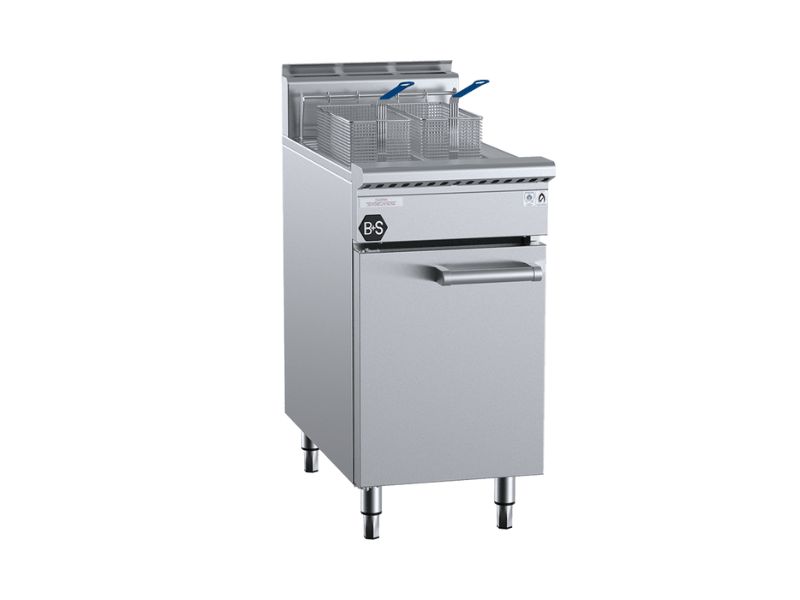
FAQs about Commercial Deep Fryers
Frequently asked questions about commercial fryers, Australia
A commercial fryer is a professional-grade kitchen appliance designed for deep frying food in restaurants, cafes, food trucks, and other food service businesses. It heats cooking oil to a high temperature, allowing food like chips, chicken, seafood, and donuts to be fried quickly and evenly.
Types of Commercial Fryers
- Countertop Fryers – Compact, ideal for small kitchens and food trucks. They are available in both gas and electric power option
- Free-standing Fryers – High-capacity models for fast-food restaurants and busy kitchens. Available in both gas and electricity although gas models are widely used and common.
- Gas Fryers – Use LPG or natural gas for quick heating and recovery.
- Electric Fryers – More energy-efficient for lower-volume frying.
The frequency depends on usage, but most commercial kitchens change fryer oil every 3 to 5 days. Using an oil filtration machine can help extend oil life and maintain food quality. However, as a general rule of thumb, it should be replaced after 8 – 10 use.
Sign of bad Oil
- Foam on the top surface
- an inability to reach frying temperatures without smoking
- a dark, dirty look and musty
- Smell fishy aroma.
Most gas fryers require proper ventilation such as exhaust hoods to meet Australian health and safety regulations. Some benchtop fryers may not require an exhaust hood, but always check with local compliance standards. If required, you may consider ductless hood system such as Woodson ductless hood or Simco mobile ductless hood
Small cafés & food trucks: Single-tank fryers (3-8L capacity)
Medium restaurants & takeaway shops: Double tank benchtop fryers (10 – 16L capacity) or free-standing 20 litre gas fryer
High-volume fast food outlets: Large capacity fryers (20L+ with multiple baskets), This kind of stores may require more than 1 unit
It depends on your fried menus, volume of order, power availability, and kitchen set-up. gas fryers heat up faster and have quicker recovery times, making them ideal for high-volume cooking. So, if you need high-volume frying, you should consider a gas fryer
Turn off and unplug the fryer or turn off the gas supply
Drain the used oil and remove food debris and residue.
Use a fryer cleaning solution or deep fryer degreaser with hot soapy water.
Scrub with a non-abrasive sponge and rinse thoroughly.
Dry completely before refilling with fresh oil.
Use an oil filtration system / machine to remove debris daily.
Keep the fryer at the correct temperature to prevent burning. (Ideal temperature is between 160°C to 190°C)
Skim out food particles after each batch.
Cover the fryer when not in use to reduce oil oxidation.

